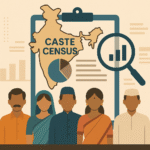Introduction
The African Charter on Human and Peoples’ Rights—commonly referred to as the Banjul Charter—stands as a landmark legal instrument that defines the contours of human rights within Africa. Adopted on June 27, 1981, by the Organisation of African Unity (OAU) and coming into force on October 21, 1986, the African Charter on Human Rights was conceived to address Africa’s unique historical, cultural, and socio-political realities. Unlike other regional human rights instruments, the Charter not only affirms individual rights but also emphasizes collective rights, duties, and development-oriented justice.
This article provides a comprehensive overview of the African Charter on Human Rights, exploring its content, principles, implementation, challenges, and its place in the global human rights regime.
Historical Context
The legacy of colonialism, apartheid, armed conflict, and socio-economic disparities influenced the urgency for a distinctly African human rights framework. While other regional human rights instruments such as the European Convention on Human Rights (1950) and the American Convention on Human Rights (1969) were already operational, the African continent lacked a cohesive legal document to protect its people’s rights.
The need for such a charter was intensified by Africa’s experience with post-independence authoritarian regimes, political instability, and civil wars. Recognizing that the universal human rights frameworks often lacked resonance with African traditions and collective values, the OAU began drafting the Charter in the late 1970s. Its goal was to create a document rooted in African values, addressing both individual and peoples’ rights, and emphasizing responsibilities to the community.
Key Objectives of the African Charter on Human Rights
The African Charter on Human Rights aims to:
- Promote and protect human and peoples’ rights.
- Foster respect for human dignity, equality, and freedom.
- Establish a regional framework for the implementation and monitoring of rights.
- Encourage socio-economic and cultural development in accordance with human dignity.
- Balance individual rights with duties to the community.
Structure of the Charter
The African Charter on Human Rights comprises 68 articles divided into several sections:
1. Rights of Individuals (Articles 2–18)
These include:
- Right to Equality (Article 3)
- Right to Life and Personal Integrity (Article 4)
- Freedom from Torture and Degrading Treatment (Article 5)
- Right to Personal Liberty and Security (Article 6)
- Right to Fair Trial (Article 7)
- Freedom of Conscience and Religion (Article 8)
- Right to Receive Information and Expression (Article 9)
- Freedom of Association and Assembly (Articles 10 & 11)
2. Economic, Social and Cultural Rights
- Right to Property (Article 14)
- Right to Work (Article 15)
- Right to Health (Article 16)
- Right to Education (Article 17)
3. Peoples’ Rights (Articles 19–24)
This is where the African Charter significantly differs from other instruments. It includes:
- Right to Self-Determination (Article 20)
- Right to Development (Article 22)
- Right to a General Satisfactory Environment (Article 24)
4. Duties of Individuals (Articles 27–29)
In a unique approach, the African Charter on Human Rights lists duties such as:
- Respecting others and not compromising the security of the state.
- Upholding national solidarity.
- Contributing to the well-being of the community.
Institutional Framework
African Commission on Human and Peoples’ Rights (ACHPR)
The ACHPR is the primary body responsible for monitoring the implementation of the African Charter on Human Rights . It was established in 1987 and is headquartered in Banjul, The Gambia.
Functions of ACHPR:
- Promotion and protection of rights.
- Interpretation of the Charter.
- Investigation of human rights violations.
- Receiving individual and inter-state communications.
African Court on Human and Peoples’ Rights (AfCHPR)
Established in 2004 and based in Arusha, Tanzania, the African Court complements the work of the Commission. It can issue binding judgments and is instrumental in ensuring legal enforceability of the Charter’s provisions.
Salient Features
1. Inclusion of Peoples’ Rights
The Charter emphasizes group rights, recognizing that communities and nations also have entitlements—like the right to self-determination, cultural identity, and resource control.
2. Integration of Duties
By mandating duties alongside rights, the Charter stresses the interconnectedness of individuals and society—rooted in African communitarian philosophy.
3. Non-Discrimination and Universality
Despite being Africa-centric, the Charter upholds the principle of universality of human rights, ensuring that all people are equal before the law.
Criticism and Challenges
While the African Charter on Human Rights has been lauded for its inclusivity and contextual relevance, it faces several criticisms:
1. Lack of Justiciability
Many of its economic, social, and cultural rights are not enforceable in a court of law.
2. Weak Enforcement Mechanism
The ACHPR lacks enforcement powers, and while the African Court exists, not all states have ratified the protocol giving individuals direct access to it.
3. Vague Language
Certain terms in the Charter are ambiguous, allowing states to interpret rights and restrictions liberally.
4. State Non-Compliance
Several member states routinely ignore Commission decisions or fail to submit mandatory periodic reports.
Achievements
Despite limitations, the African Charter on Human Rights has made notable strides:
- Expanded legal awareness of human rights in Africa.
- Played a role in establishing norms against torture and arbitrary detention.
- Paved the way for national human rights commissions across Africa.
- Catalyzed civil society advocacy and legal reforms.
African Charter and Women’s Rights
The African Charter on Human Rights is supplemented by the Protocol to the African Charter on the Rights of Women in Africa (Maputo Protocol) adopted in 2003. It addresses:
- Gender-based violence.
- Reproductive rights.
- Economic and social inclusion.
- Equality before the law.
This protocol is one of the most progressive regional instruments for women’s rights globally.
African Charter on Human Rights and Children’s Rights
Inspired by the Charter, the African Charter on the Rights and Welfare of the Child (ACRWC) was adopted in 1990. It addresses African-specific issues like:
- Child labor.
- Early marriage.
- Cultural practices harmful to children.
Global Influence
The African Charter has inspired other regional instruments and enriched global discourse by:
- Validating collective rights.
- Emphasizing duties.
- Promoting a rights-based development model.
Future Outlook
To enhance its relevance and impact, the African human rights system must:
- Strengthen the African Court and ensure more states accept its jurisdiction.
- Empower civil society to hold states accountable.
- Improve the implementation of Commission and Court decisions.
- Increase awareness and accessibility for ordinary African citizens.
Conclusion
The African Charter on Human Rights remains a cornerstone of the African continent’s commitment to justice, equality, and dignity. It is a testament to Africa’s ability to forge its own path in the global human rights landscape—one that respects both individual freedom and collective well-being.
While the road to full implementation is fraught with challenges, the Charter’s spirit continues to inspire advocates, legal systems, and communities across Africa. As the continent navigates complex political, social, and economic realities, the African Charter remains a living document—one that continues to evolve and reflect the aspirations of African peoples.
Read more articles on RightsRecall.com



